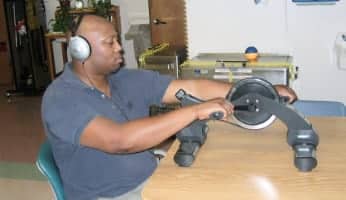Kaitlin’s Journey: Overcoming Challenges and Building Confidence with IM Therapy

Home - Testimonials - Pediatric Testimonials - Kaitlin’s Journey: Overcoming Challenges and Building Confidence with IM Therapy

Kaitlin’s Journey: Overcoming Challenges and Building Confidence with IM Therapy
The use of the Interactive Metronome (IM), as a modality to enhance new learning patterns and motor coordination, is growing steadily in therapy settings across the country.
This diverse treatment tool can be adapted to cross the boundaries from pediatric to adult populations, who in many cases had given up hope of further gains. Portable and easily set up to suit a patient’s individual treatment plan, clinicians are exploring new pathways to impact an individual’s learning style.
Over the course of treatment patients learn to connect to an auditory computer generated stimuli requiring a specific motor response. Each response is measured by the computer program in milliseconds, to detect response speed and accuracy of patients using diverse motor patterning.
Over time patients adjust to increased motor challenge combined with increased repetition of motor response, which in turn leads to the laying down of new motor pathways and fluidity in motor patterning. Both auditory and visual systems can be isolated to assist in attention to task. Gross and fine motor coordination can be targeted for a goal-specific response.
The development of the home product, IMHOME, has expanded treatment to family settings, allowing increased frequency of use and the comfort of home surroundings.
Case Study
Kaitlin Kaitlin could never have been described as a quiet and unassuming child. From an early age she learned to take control of her environment and was often found climbing cabinetry and stairwells in her house.
However, this outward appearance of self-confidence and often open defiance, were dichotomous to true feelings of decreased self-worth, inferiority and overall lowered self esteem.
At the age of 6 years of age it emerged that this front could no longer suffice as a protection strategy.
Kaitlin’s teachers were aware of the challenges that she presented with comprehension and processing and recommended further testing be performed to come up with a diagnosis. As a student of a private school, OT services were not available as a referral source.
Areas of Improvement
Through private OT consultation an initial plan and prioritization of issues was set in place as follows:
- Integration of visual motor skills to whole task activities
- Increased length of focused attention to non-preferred/challenging activities
- Proximal stability/core strength during static tasks
- Complete standardized testing in clinic and school based settings to establish possibility of diagnosis related to learning disability
- Sustaining attention and compliance to IM-HOME
- Vocal regulation and articulation
- Recognition of body part identification during motoric activity
- Relaxed body posture and engaged facial exchanges during communication
As a case in progress, initial concerns were voiced by her parents, teachers and close friends.
Introduction of IM Training
Kaitlin commenced an IM program designed to aid attention and entice engagement. Activities were set between each IM exercise in a “Funblast” program format. This empowered Kaitlin to participate as the choices remained up to her.
Motivational activities were established with Kaitlin’s participation as follows:
Funblast Program
- Juggling Sticks
- Balance activities on taped line
- Tray ball toss
- Visual scanning of preferred picture during marching/stepping activities
- Eating a snack while using IM foot trigger
- Bouncing on trampoline
- Balancing on Bosu
IM-HOME repetitions were increased weekly from 4 sets of 54 to 8 sets of 54 over a 3 week course.
Results After IM Training
Following an initial 3 week program with frequency at 3 times per week, Kaitlin presented with the following gains:
- Improved articulation
- Decreased mumbling during challenging activities
- Increased confidence for novel motor play (use of “Heelies” – her own personal best!)
- Decreased sensory defensiveness to noxious stimuli
- Teachers report improved postural control
- during class (leading to observation of visual tracking difficulties in isolation)
- Award “Star of the week” for good behavior
- Successfully and competently “posting” during horseback riding lessons
- Increased participation in homework activities
As Kaitlin has shown such promising results in such a short period of time, her family plans to continue consultation with OT and develop further IM-HOME activities for a further period of 3 to 6 months.
Goals will continue to focus on Kaitlin’s overall self esteem and ability to embrace new challenges without the need for hyper-defensiveness or anxiety.
As the weeks pass we are discovering a whole new Kaitlin emerging, as she uses the IM.
Mary Jones OTR/L, LMT, CIMT is a certified Interactive Metronome provider and the owner of Sensational Kids LLC. in Bradenton, FL




